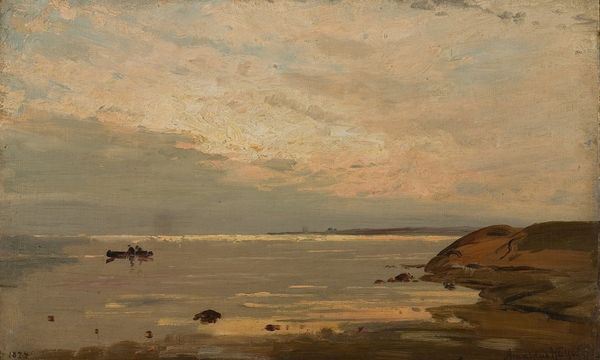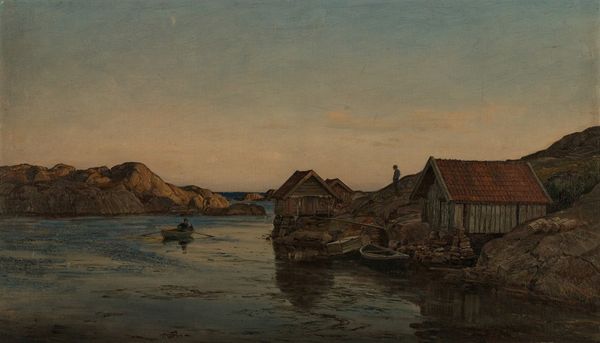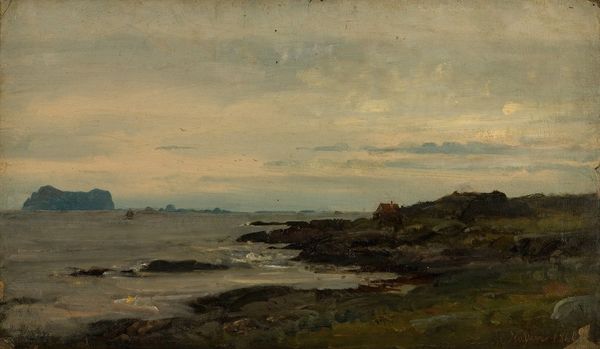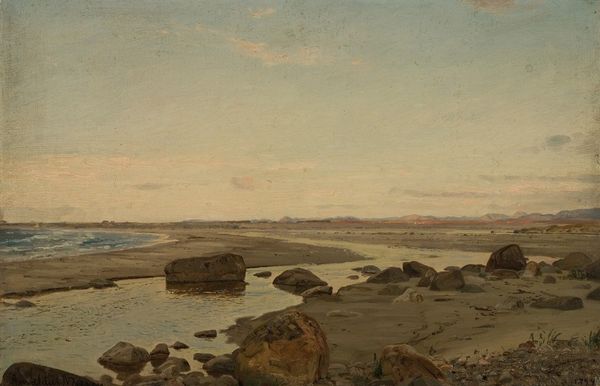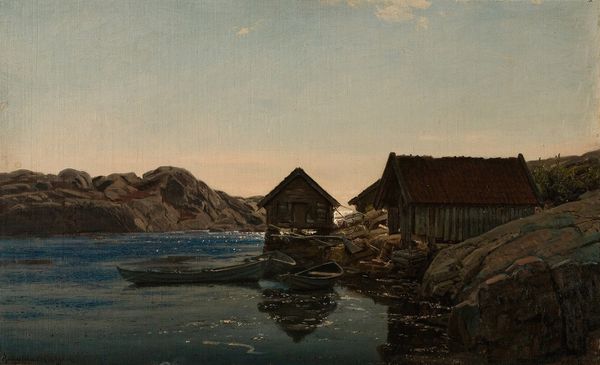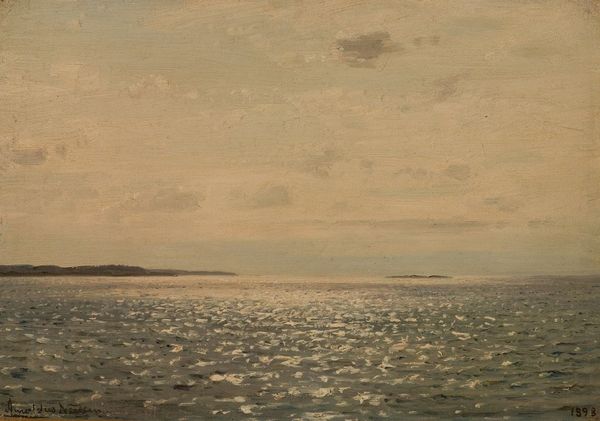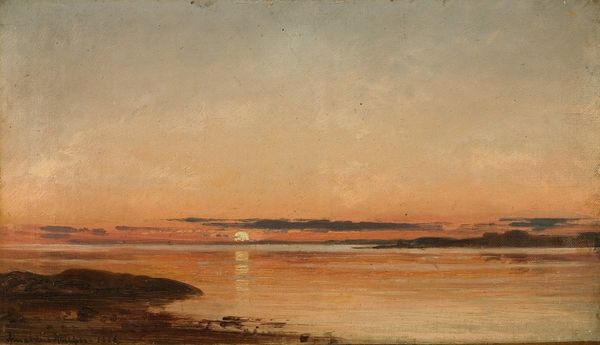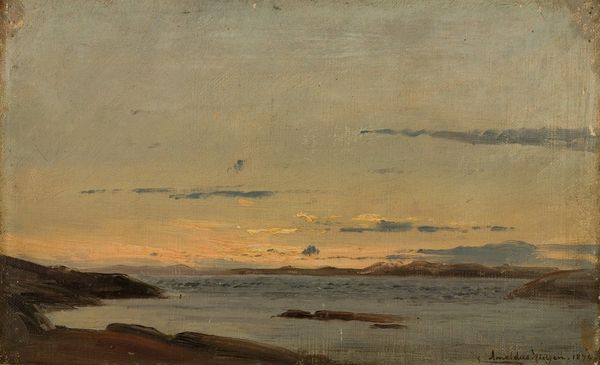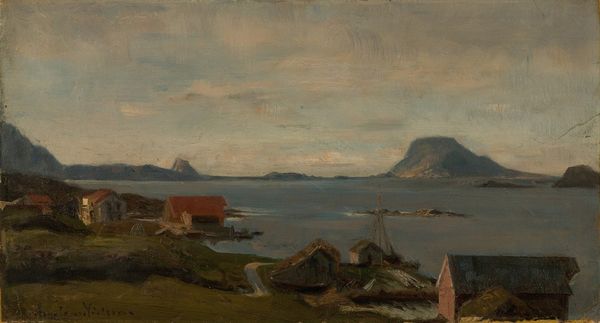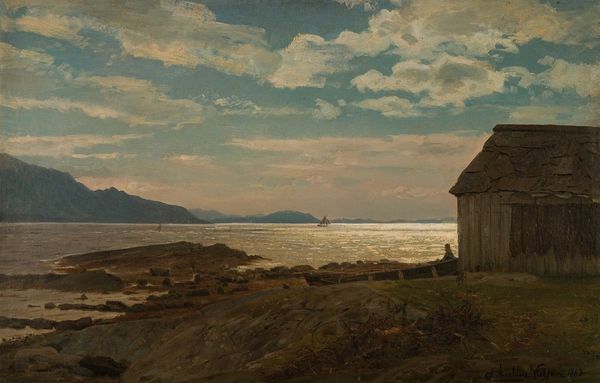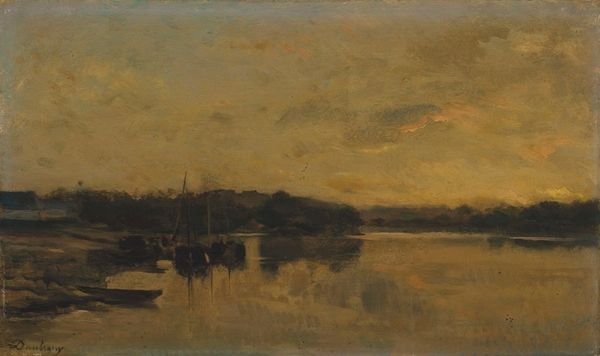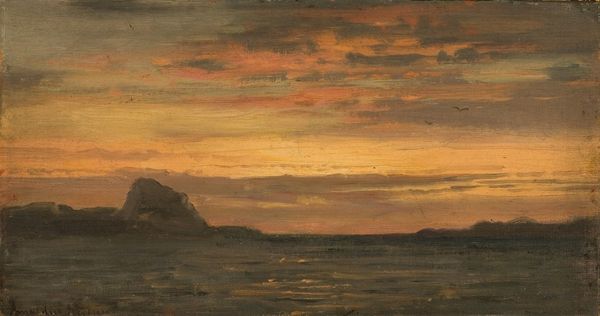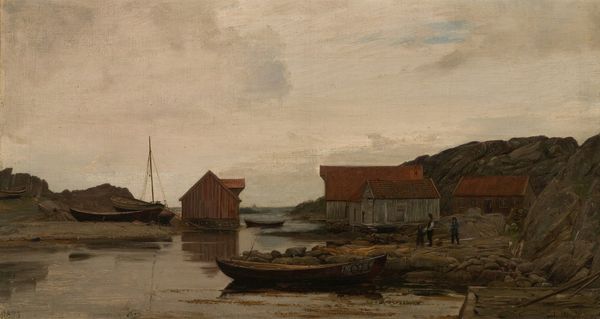
Copyright: Public Domain: Artvee
Curator: Here we have Amaldus Nielsen's "Kattehåle, Lindesnes," painted in 1902. The medium appears to be watercolors. Editor: There's a stillness to it. The hazy light and the muted palette give it this quiet, almost melancholic feel. The construction itself looks pretty humble, as if thrown together to get a job done, and that dark door has certainly seen better days! Curator: It's interesting to note that Nielsen worked en plein air, meaning he painted this outdoors, directly observing the scene. This links him to the Impressionist movement’s commitment to capturing transient moments and the immediate effects of light and atmosphere. Lindesnes, being a coastal area in Norway, provides the sort of raw, natural beauty artists of that era were drawn to. Editor: Absolutely. The visible brushstrokes tell a story of how quickly he had to work to capture the moment, dealing with shifting tides or the changing light. Watercolor itself lends a hand to that quick capture - it isn’t really a medium to use for laboured, fussy pieces. Considering the romantic, almost nostalgic interpretation that Nielsen offers, is this place of labor or leisure for those who use it? Curator: That’s a pertinent question, isn’t it? We see the rise of tourism at this time along the Norwegian coast. And Nielsen was an established figure within the art scene and was commissioned for public art works. His choice of Kattehåle is an image then chosen through this matrix of politics and marketing. Is the everyday labor sanitised for popular consumption? Editor: Perhaps. Though what intrigues me, the sheer lack of embellishment. The utility of the wooden shack; its construction responding directly to its geography. Those stark roofs could be easily replaced if broken during hard winters. To look at the painting materially tells us about it inhabitants just as much as its purpose. Curator: It really brings to mind the way early art markets and institutions shaped the presentation and preservation of landscapes like this. Think about the narrative they wanted to create of Norwegian identity and progress, that mix of tradition and modernity... Editor: Looking at Nielsen's deliberate simplicity, and that emphasis on the building material - well, it all offers us a compelling entry point into understanding labour and social practices tied to Norway’s beautiful, harsh coast. Curator: Agreed. It makes one consider the power structures inherent in representation, especially when natural beauty becomes a commodity. Editor: Indeed. So much more here than a quaint watercolor sketch of a shack, isn't there?
Comments
No comments
Be the first to comment and join the conversation on the ultimate creative platform.
